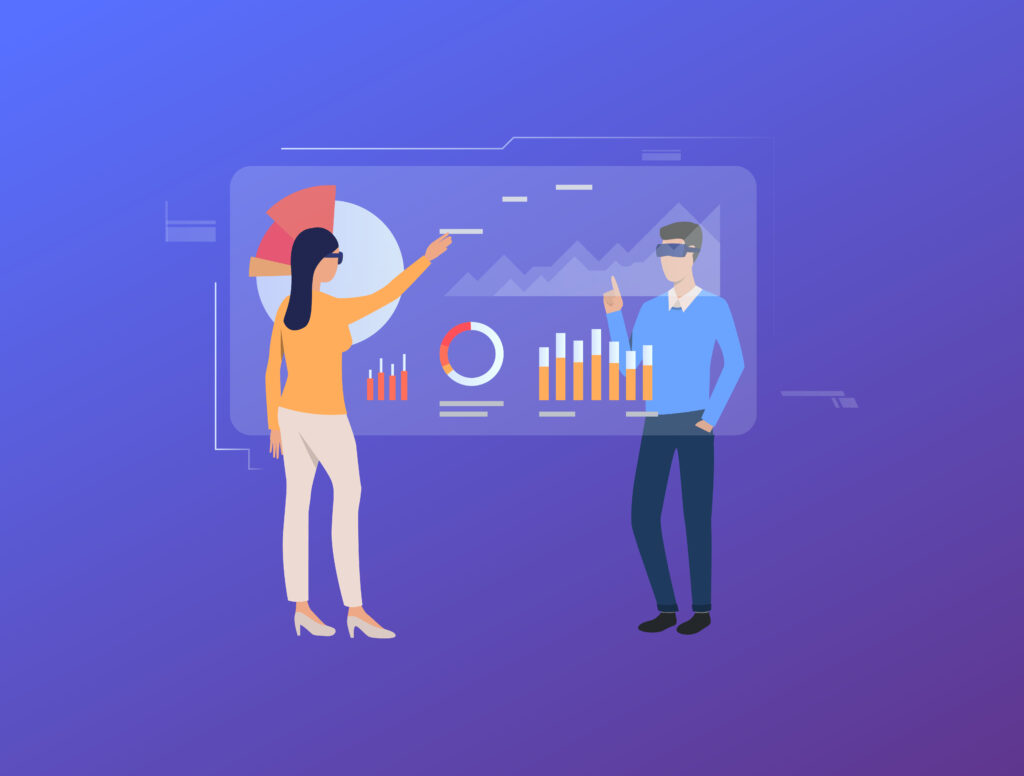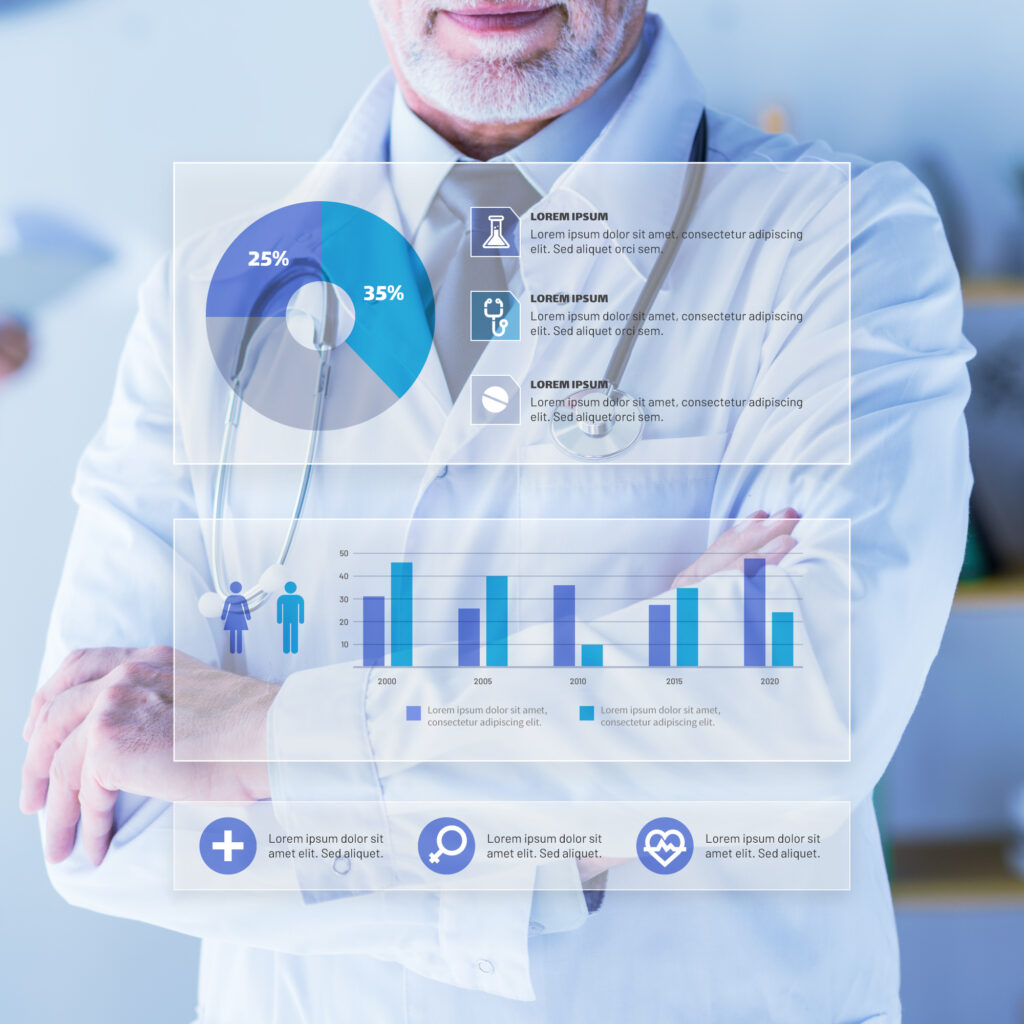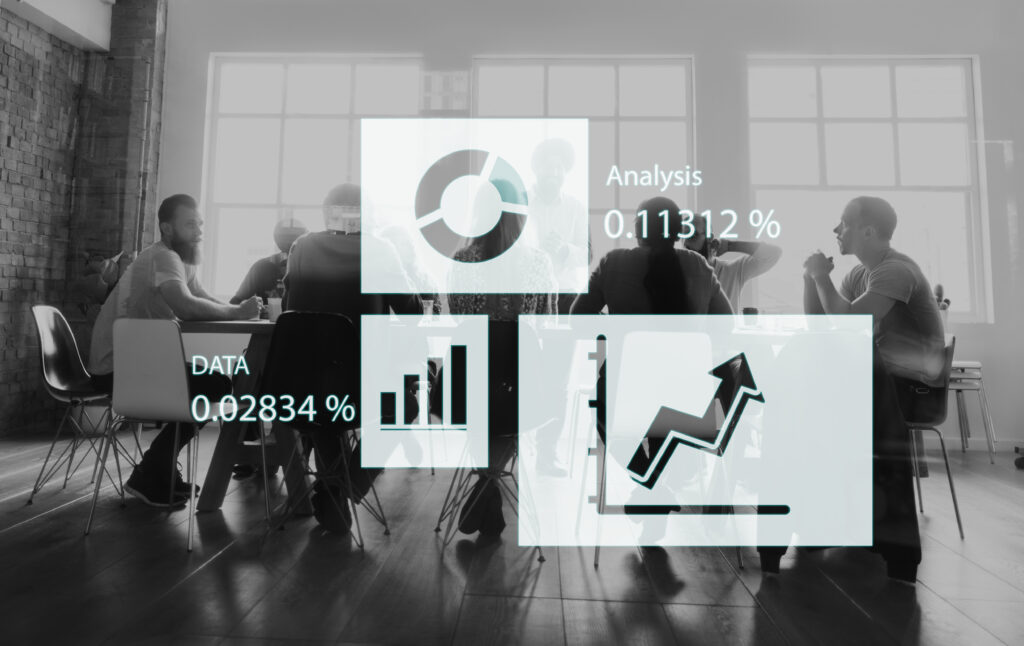The Role of Data Analytics in Business Decision-Making for 2025
Introduction: Why Data Analytics Matters in 2025

In today’s hyper-competitive world, data analytics is no longer just a buzzword—it’s the backbone of every successful business. As we step into 2025, organizations across industries are making data-driven decisions faster and smarter than ever before. From predicting consumer trends to optimizing supply chains, data has become the new oil that fuels innovation and growth.
But what exactly makes data analytics in 2025 so important? The answer lies in the power of converting raw data into actionable insights. Businesses are flooded with data every second—customer transactions, website interactions, IoT devices, and social media footprints. Without proper analytics, this data is nothing more than digital clutter. With analytics, however, it becomes a powerful decision-making tool.
Understanding the Importance of Data-Driven Decisions
What is Data Analytics?
At its core, data analytics is the process of examining large volumes of data to uncover hidden patterns, correlations, and insights. It involves statistical models, machine learning algorithms, and visualization tools to transform complex datasets into understandable business insights.
For example, an e-commerce company can analyze customer buying behavior to personalize recommendations, while a bank can use analytics to detect fraudulent transactions.
Types of Data Analytics in Business
To fully grasp the role of analytics, it’s important to understand its four major types:
Descriptive Analytics – Answers “What happened?” by using dashboards and reports.
Diagnostic Analytics – Answers “Why did it happen?” with root cause analysis.
Predictive Analytics – Answers “What might happen?” using forecasting models.
Prescriptive Analytics – Answers “What should we do?” with AI-driven decision-making.
In 2025, businesses are increasingly relying on predictive and prescriptive analytics to stay ahead of competitors.

Key Benefits of Data Analytics for Business Decision-Making

Improving Operational Efficiency
One of the biggest advantages of data analytics is operational optimization. By analyzing performance metrics, companies can identify bottlenecks and reduce costs.
👉 Example: Manufacturing companies use predictive maintenance analytics to detect equipment failures before they happen, saving millions in downtime.
Enhancing Customer Experience
Today’s customers expect personalized interactions. Data analytics in 2025 enables businesses to understand customer journeys in real time.
👉 Example: Netflix leverages viewing data to recommend content, while Amazon personalizes shopping experiences based on purchase history.
Predicting Market Trends in 2025
With the explosion of big data, businesses can now forecast future demand with high accuracy. Predictive analytics enables decision-makers to anticipate shifts in consumer preferences and adjust strategies accordingly.
👉 Example: Retailers use analytics to predict seasonal demand, ensuring they stock the right products at the right time.
The Role of AI and Machine Learning in Data Analytics
AI and machine learning are transforming data analytics from a reactive tool into a proactive decision-making system. In 2025, these technologies allow businesses to automate analysis, detect anomalies instantly, and provide prescriptive recommendations.
For instance, AI-powered chatbots not only answer queries but also analyze customer sentiment, helping companies improve products and services.

Real-World Applications of Data Analytics in 2025
Data Analytics in Healthcare
Healthcare is one of the biggest beneficiaries of analytics. Hospitals use predictive models to forecast patient admissions, optimize staff allocation, and detect disease outbreaks. Personalized medicine powered by data analytics improves treatment outcomes.
Data Analytics in Finance
Banks and fintech companies rely on analytics to detect fraud, manage risk, and offer personalized financial advice. Algorithms analyze spending behavior to recommend saving strategies or detect suspicious transactions.
Data Analytics in E-commerce
E-commerce giants thrive on data-driven strategies. From personalized recommendations to price optimization, analytics shapes customer experiences. In 2025, real-time data integration allows retailers to track user intent and predict buying decisions instantly.

Challenges of Implementing Data Analytics in Businesses

While powerful, data analytics isn’t without challenges. Businesses often struggle with:
Data Quality Issues – Inaccurate or incomplete data reduces reliability.
High Implementation Costs – Setting up big data infrastructure requires significant investment.
Talent Shortages – The demand for skilled data analysts, scientists, and engineers continues to exceed supply.
Data Privacy Concerns – With stricter regulations in 2025, companies must ensure compliance in every step of analysis.
Best Practices for Leveraging Data Analytics in 2025
Implementing data analytics successfully is not just about having access to large volumes of data or purchasing advanced tools—it’s about creating a sustainable framework where people, processes, and technology work together. Businesses in 2025 face increasing competition, tighter regulations, and rapidly evolving consumer expectations. To overcome these challenges and maximize the true impact of analytics, organizations should follow a set of best practices. Let’s explore them in detail.
1. Invest in Data Governance
Data governance is the foundation of effective data analytics. Without reliable, accurate, and secure data, even the most sophisticated tools will fail to deliver meaningful insights.
Accuracy and Consistency: Businesses must establish clear data entry standards and validation processes to ensure that information is consistent across all departments. For example, if sales data is recorded differently in multiple systems, insights generated will be flawed.
Security and Compliance: With stricter privacy laws like GDPR, HIPAA, and India’s DPDP Act in 2025, companies must ensure sensitive customer and financial data is handled responsibly. Encryption, access control, and audit trails should be part of every analytics system.
Data Stewardship: Assigning data stewards or governance teams ensures accountability. They monitor data quality, manage permissions, and enforce compliance rules across the organization.
👉 Simply put, strong governance ensures businesses make decisions based on trusted and verified data.
2. Build a Data-Driven Culture
Technology alone cannot transform a business—people must be empowered to embrace data analytics in their daily decision-making.
Training & Awareness: Employees should be trained on how to interpret dashboards, use business intelligence tools, and ask the right questions. For instance, marketing teams must learn how to evaluate customer segmentation data to run more effective campaigns.
Leadership Support: Executives should promote a “data-first” mindset, where decisions are backed by numbers rather than intuition or assumptions. When leaders themselves rely on data, employees are more likely to follow.
Cross-Functional Collaboration: Encouraging collaboration between IT, business, and analytics teams ensures that insights are not siloed but shared across departments for maximum impact.
👉 A data-driven culture fosters confidence in decision-making and ensures that analytics becomes a part of everyday business strategy rather than an occasional add-on.
3. Adopt Scalable Tools
In 2025, businesses must prepare for an exponential increase in data volumes, driven by IoT devices, e-commerce platforms, and real-time customer interactions. Traditional systems cannot handle this scale.
Cloud-Based Analytics Platforms: Tools like AWS, Azure, and Google BigQuery offer on-demand scalability, meaning businesses can process terabytes of data without investing in costly on-premise infrastructure.
Flexibility and Cost-Efficiency: Cloud solutions allow companies to pay only for what they use, making analytics affordable for both startups and enterprises.
Integration with Other Tools: Scalable platforms seamlessly integrate with CRM systems, ERP solutions, and marketing automation tools, ensuring businesses get a unified view of their operations.
👉 By adopting scalable solutions, businesses ensure their data analytics strategy grows with them.
4. Integrate AI & Automation
The future of analytics is about speed and intelligence. AI and automation in 2025 are redefining how organizations handle data.
Automated Data Preparation: Instead of spending hours cleaning and transforming data, AI-driven tools automate the process, allowing analysts to focus on insights.
Real-Time Decision-Making: AI models can instantly detect anomalies—for example, a sudden spike in fraudulent transactions—and trigger alerts before the issue escalates.
Prescriptive Analytics: Beyond predicting outcomes, AI suggests the best possible action. For example, an AI-powered system may recommend adjusting inventory levels based on predicted demand.
👉 Integrating AI ensures that businesses move from reactive analysis to proactive decision-making.
5. Measure ROI
Finally, every analytics initiative must be tied to business goals and measurable outcomes. Without clear ROI tracking, businesses risk wasting resources.
Define KPIs Early: Metrics such as revenue growth, customer retention, reduced operational costs, or improved campaign performance should be identified at the start.
Continuous Monitoring: Dashboards and reports should be regularly reviewed to check if analytics initiatives are meeting targets.
Feedback Loop: Businesses must refine their models based on performance. For instance, if predictive models consistently miss sales forecasts, they need to be retrained with updated data.
👉 Measuring ROI ensures that data analytics is not seen as an expense but as a strategic investment that directly contributes to growth.
🔑 Final Thoughts
In 2025, businesses that want to stay competitive must go beyond simply collecting data—they need to implement structured practices that transform data into real business value. By investing in governance, nurturing a data-driven culture, adopting scalable tools, integrating AI, and continuously measuring ROI, companies can unlock the full potential of data analytics and ensure long-term success.
Future Trends in Data Analytics and Decision-Making

As businesses enter 2025, the role of data analytics is expanding beyond dashboards and reports. Emerging technologies, combined with changing market needs, are shaping how organizations will use analytics for faster and smarter decision-making. Here are the key trends that will dominate the future of data analytics in 2025:
1. Augmented Analytics: AI Meets Human Intelligence
One of the most important shifts is the rise of augmented analytics, where artificial intelligence (AI) and machine learning (ML) enhance the capabilities of business intelligence tools. Instead of relying only on data scientists, AI-driven platforms automatically prepare data, generate insights, and suggest next actions.
For example, a marketing manager can upload campaign data, and the system itself will highlight which ad performed best, why it succeeded, and what should be done next. This fusion of AI and human intuition reduces dependency on technical experts and ensures that decision-making becomes faster and more accurate.
By 2025, Gartner predicts that augmented analytics will be embedded in most analytics platforms, making it a standard feature for businesses across industries.
2. Edge Analytics: Real-Time Insights from IoT
Another emerging trend is edge analytics, where data is analyzed directly at the source (IoT devices, sensors, machines) rather than being sent to cloud servers. This is particularly useful in industries like healthcare, manufacturing, and transportation where real-time decisions can save time, costs, and even lives.
👉 Example: In autonomous vehicles, sensors analyze data instantly on the car itself to make split-second driving decisions, rather than waiting for cloud servers to respond.
By processing data closer to where it is generated, edge analytics reduces latency, lowers bandwidth costs, and enhances real-time decision-making. As IoT adoption grows, businesses in 2025 will increasingly depend on edge analytics for mission-critical applications.
3. Natural Language Processing (NLP): Analytics for Everyone
Traditionally, only analysts and data scientists could query databases or BI tools. But with natural language processing (NLP), executives and non-technical users can simply ask questions in plain English and receive instant answers.
👉 Example: A CEO could ask, “What were our top five selling products last quarter in Asia?” and receive a clear chart within seconds.
This democratizes data analytics, making insights accessible to decision-makers at every level. In 2025, NLP-powered BI tools will ensure that analytics is no longer limited to IT teams but becomes an everyday tool for sales, HR, finance, and operations departments.
4. Data Democratization: Empowering Every Employee
The concept of data democratization is about giving every employee—regardless of technical background—the ability to access and use data for decision-making. With self-service BI tools like Power BI, Tableau, and Qlik, non-technical staff can create dashboards, run reports, and analyze data without depending on IT departments.
This trend empowers organizations by creating a data-driven culture, where decisions are based on evidence rather than gut feelings. By 2025, companies that adopt democratization will experience faster decision-making cycles and greater innovation, as employees at all levels will contribute insights.
5. Ethical Analytics: Responsible Data Use
As analytics becomes more powerful, concerns around data privacy, fairness, and transparency are increasing. Governments worldwide are tightening data protection regulations (like GDPR and India’s DPDP Act), forcing businesses to use ethical analytics practices.
Ethical analytics ensures that data is collected, stored, and analyzed responsibly, avoiding bias in algorithms and respecting user privacy. For example, financial institutions using AI for credit scoring must ensure their models do not discriminate against certain demographics.
In 2025, businesses that prioritize ethical analytics will not only stay compliant but also gain customer trust, which is increasingly becoming a competitive advantage.
The Bigger Picture
These five trends—augmented analytics, edge analytics, NLP, data democratization, and ethical analytics—are converging to make data analytics in 2025 more intelligent, accessible, and responsible. Companies that adopt these trends early will unlock new opportunities for growth, while those that resist may fall behind in an increasingly data-driven world.
In short, the future of decision-making lies in smarter, faster, and fairer data analytics—a future where every business decision, big or small, will be powered by insights rather than assumptions.
Conclusion: Data Analytics as a Growth Engine in 2025
As we move deeper into the digital era, data analytics is no longer just a supportive tool—it has become the cornerstone of business decision-making. Organizations that once relied on intuition or limited market research now turn to powerful analytics platforms to guide every major business move. From launching new products to predicting consumer behavior and managing risk, analytics has shifted from being a back-office function to a boardroom necessity.
By leveraging predictive insights, AI-powered tools, and real-time data, companies are not just optimizing operations but fundamentally transforming how they compete in the global marketplace. In industries where margins are thin and competition is fierce, the ability to harness insights faster than competitors often determines success or failure.
Why Data Analytics is a Non-Negotiable in 2025
In 2025, the pace of change in business is unprecedented. New technologies, evolving customer expectations, and global economic shifts demand agility. Data analytics empowers leaders to make proactive, evidence-based decisions rather than reacting to problems after they occur.
For instance:
Healthcare providers can anticipate patient needs, reduce waiting times, and deliver personalized treatment plans.
Financial institutions can detect fraud in milliseconds, protect customer trust, and manage large-scale investments with predictive accuracy.
E-commerce giants can forecast seasonal demand, optimize pricing in real time, and create hyper-personalized shopping experiences.
Manufacturers can predict equipment breakdowns, ensure uninterrupted production, and save millions through predictive maintenance.
These examples highlight one truth: businesses that embrace analytics in 2025 will thrive, while those that ignore it will struggle to survive.
Data Analytics as a Competitive Advantage
Another crucial factor is the role of data analytics in building a competitive edge. Every business today has access to data, but not every business knows how to use it effectively. The winners in 2025 are those who can:
Identify valuable insights hidden in vast data lakes.
Act quickly on those insights with minimal lag.
Scale analytics across departments—sales, marketing, HR, finance, and operations.
Integrate AI and machine learning to continuously improve predictions and outcomes.
This ability transforms analytics from a back-end reporting system into a strategic driver of growth.
The Future: Analytics as a Culture, Not Just a Tool
Perhaps the most profound shift in 2025 is cultural. Data analytics is no longer confined to analysts or IT teams—it has become a company-wide mindset. Businesses that foster a data-driven culture encourage employees at every level to base decisions on evidence rather than gut feeling. With the rise of self-service analytics platforms, even non-technical professionals can explore data, visualize insights, and make informed decisions.
Moreover, ethical data analytics is becoming increasingly important. With stricter data privacy laws, organizations must balance innovation with responsibility. Companies that adopt transparent, fair, and ethical data practices will not only gain customer trust but also avoid regulatory pitfalls.
Looking Ahead
As the future unfolds, one thing remains clear: data analytics is the growth engine of 2025 and beyond. Businesses that integrate analytics into their DNA will have the resilience to adapt to market shifts, the intelligence to outpace competitors, and the foresight to create long-term value.
Whether in healthcare, finance, e-commerce, logistics, or manufacturing, the message is the same: data analytics is no longer optional—it’s essential for survival and success.
The companies that thrive in this new era will be those that don’t just collect data, but transform it into insights, action, and ultimately, innovation. In 2025, data analytics is not only shaping decisions—it is shaping the future of business itself.
